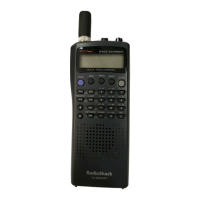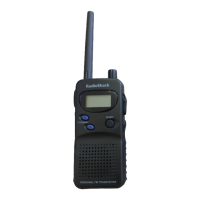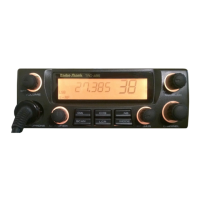What to do if Radio Shack Transceiver has signal and BUSY but no sound?
- TTracy LandryAug 12, 2025
If the signal strength meter shows a signal and BUSY appears, but there is no sound from the speaker of your Radio Shack Transceiver, make sure that DTMF is not on the display. If it is, press DTMF to turn off the DTMF page. Also, ensure that T-SQL is not on the display; if it is, press T-SQL until neither T nor T-SQL appears. Verify that VOLUME and SQUELCH are properly adjusted and that nothing is plugged into the EXT. SP jack.








